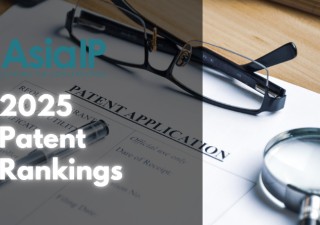Deferred examination: Patent strategy or business necessity?
17 January 2022

It is true that inventions are always ahead of time. There is a time lag between the conception of the invention and its final entry into the market.
With fierce competition growing, the explosion of patenting activity is visible in all patent jurisdictions. Every patent office lacks the infrastructure and examination capacity to deal with this exponential increase in the filing of patent applications. According to WIPO statistics, more than 3 million patent applications are added every year, increasing the additional workload on patent offices. There is a growing backlog in the examination and processing of applications across all patent offices. In order to check the delay time and stagger the examination process, many countries, including India, have adopted the deferred patent examination system to provide a grace period within which applicants can decide whether, and when, to make the request for examination. The rationale behind giving the applicants such an opportunity is to enable them to have a second- look at the value of their patent and, in appropriate cases, seek an early withdrawal of unpromising applications. Eventually, this will curtail patenting costs on the patentee and alleviate the workload of the patent examiners.
Quick examination versus deferred examination
Theoretically, every invention is protected once the inventor files an application in the patent office under the first-to-file system. In reality, it is very difficult for any inventor to take advantage of a pending application to sue and stop copycats that are infringing upon the invention. This is true where inventors are small firms; in such cases where market competition and fear of being preempted by infringement by competitors, it is more evident. Such fears may propel these firms to request patent examinations early without waiting for the statutory time available to file a request for examination. We may say that small companies are prompted by market competition or fear of infringers to make an early request for patent examination and secure their patent right quickly. However, in practice, larger companies keep their patent examinations pending to keep competitors away from filing similar patent applications. The direct and indirect costs of bargaining or entering into legal dispute with competitors and the advantages of keeping patent applications pending varies across the company size.
Grace period for examination
The grace period for examination requests varies from country to country with a deferred examination system in place. For example, Germany and China allow grace periods of seven years and three years, respectively; South Korea has a five-year grace period, and India opted for four years. But India also opted for a pre-grant opposition system, which also allows the filing of a request for early examination by a third party; this option has been rarely used in India.
The increasing trend for opting for deferred examination is visible, as out of the 200,223 patent applications filed from 2016-17 to 2019-20, 156,458 requests for the examination have been received. Some 43,465 applicants opted for deferred examination, which is about 22 percent of all applicants. According to one study on South Korean patent applications from 2006-2009, 84.8 percent of small/ medium companies had optednfor an immediate request for examination as compared to 40 percent of such requests made by large companies. This means that the larger companies are making use of the deferred examination more aggressively than the smaller ones.
Benefits of deferred examination
Not every invention succeeds in the market. Large companies facing higher degrees of market competition are more likely not to file patent applications altogether for inventions of low expected value. If they expect a lower degree of competition for low-value inventions, these large companies will often file patent applications but defer examination requests. They opt for deferred examination to gain time to evaluate the economic and commercial viability of these inventions and gain time so that such applications are allowed to lapse by the end of the grace period if these inventions were found to be of little commercial value. This allows companies to cut costs and keep competition alive. If the invention belongs to a crowded category expecting fierce competition, large companies tend to file applications and request immediate examinations for inventions with a high expected value. This allows the companies to preempt infringers.
There could be several possible reasons why smaller companies do not seek to use waiting time under deferred examination systems as an option to evaluate their invention. First, small/medium companies often face financial constraints and are thus unable to exploit the option of filing applications while delaying examination requests. Normally, such companies would prefer to file patent applications only for inventions for which they are determined to acquire patent rights. Accordingly, for these firms, it makes no sense to delay examination requests. Second, small/medium companies invariably pursue patents for purposes such as attracting angel investors to kickstart new ventures and for seeking capital investment so they can start their manufacturing processes. Third, these companies are likely to have more incentives to secure patent protection early to gain capital investment and establish their market credibility.
Deferred examination as a patent strategy
Large companies are opting to use deferred examination as a patent strategy for multiple reasons. First, patent applications filed by large companies tend to have a higher uncertainty on continuing the patent application for the grant. Second, large companies are more likely to file a patent application as a defensive strategy to keep competition at bay. Third, these companies prefer to incur a cost for grant of a patent where they have sure chances of success in the market. Fourth, lengthening the period of uncertainty on grants suits their strategy to preempt likely infringers. Last but not least, the strategy allows them to defer and stagger costs involved in patenting in multiple countries.
The best approach
The appropriate strategy depends on the approach of the patenting entity. They may take an offensive rather than defensive patenting stance. Small companies normally seek patents where they are determined to seek grants rather than letting them lapse during prosecution. Larger ones often seek immediate patents for blockbuster inventions and opt for deferred examination for inventions with little value. No doubt we may see a higher ratio of lapsed applications by larger companies as compared to small/ medium ones.
For patent offices, deferred examination plays a significant role in staggering their pendency and management of the ever- growing backlog of the pending patent application. The Indian patent office is aware of the needs of patenting entities, and has launched expedited examination for startups and women inventors, among others, who are determined to seek patents quickly, particularly in new and blockbuster technologies.
A deferred examination system provides a win-win opportunity to patenting entities and patent offices, alike. Large companies with significantly higher capital and R&D intensity are more likely to seek benefits from the deferred examination than small/medium companies.They can strategically defer examination in India and obtain grants of the patent in the United States and Europe.
The grant of a patent before examination in India normally has persuasive value if not decisive in grants of patents in India. The patent office in India allows patenting entities to adapt their patenting strategy to meet their business requirements. Since the grace period for examination requests across countries varies, patenting entities are advised to check and use deferred examination systems to suit their business requirements accordingly. Expert advice can help patenting entities understand and select the patenting approach which is best suited to the requirements of their inventing activities and business strategy








